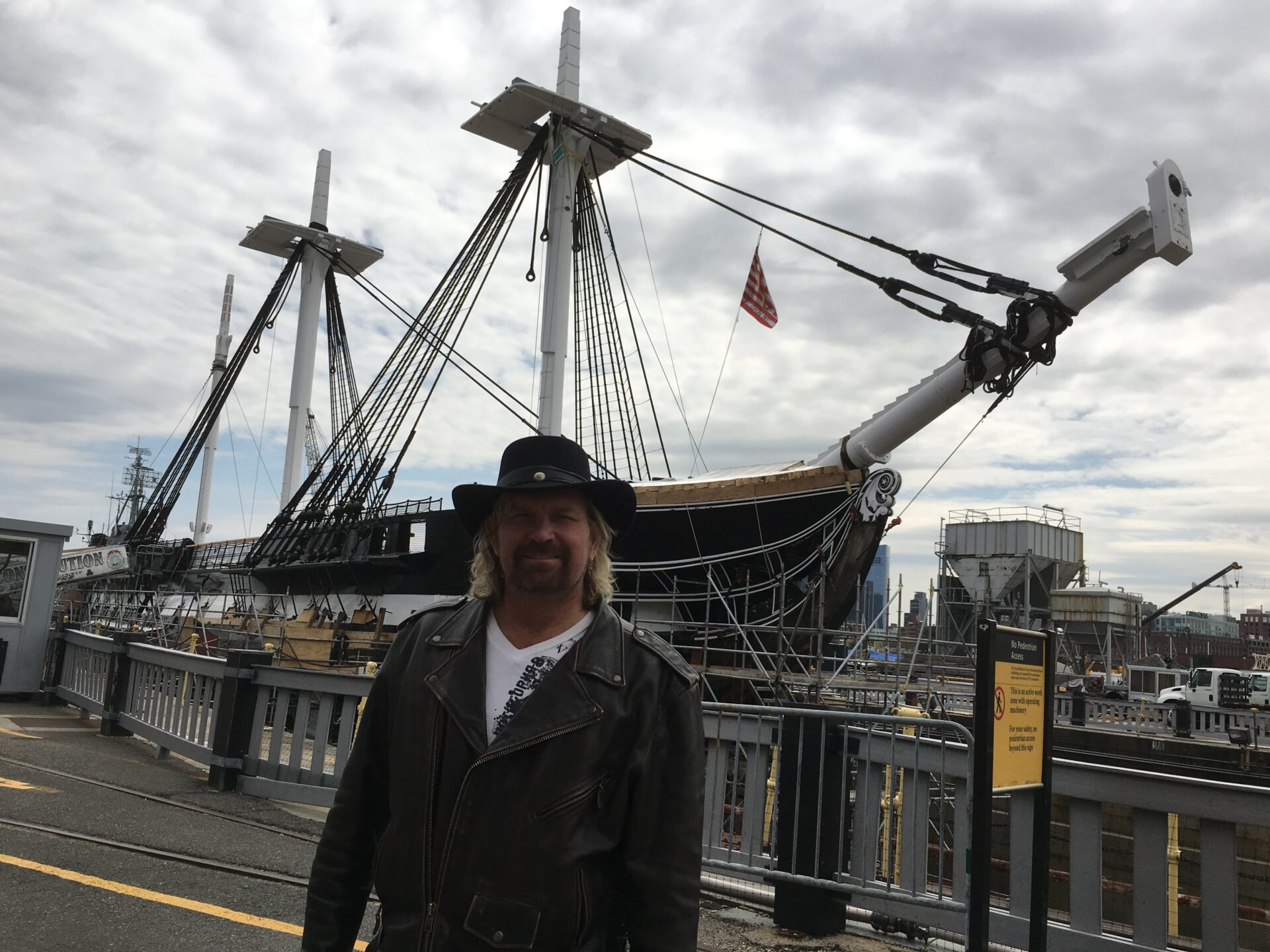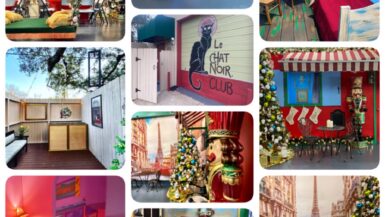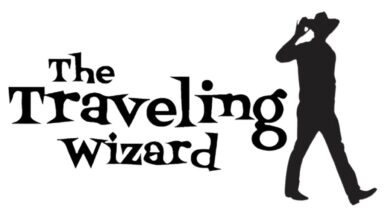Boston is the undisputed hub of American independence. From the Mayflower to the famous tea party, the people of this area created the country we live in today. If you hated history like most people do in high school, you might be wondering if you should read any further. Yes, you should! Like Bill and Ted’s Excellent Adventure proves, going to places and meeting the people that live there changes the way you feel about things you’ve only read about.
Boston makes it easy. The minute you step off the plane, there’s some life-sized founding father cutouts waiting to pose with you. You don’t have to know who they are, but John Hancock is certainly one of them. Downtown Boston is just ten minutes from the airport. It’s a mix of new buildings and three hundred year old halls that somehow manages to still look cool. Look down at your feet and you might notice a brown brick trail. Bored? Follow that trail and you’ll stay busy for most of the day and learn a lot about American history. The Freedom Trail, as it is known, connects most of Boston’s important historical sites together into one giant 2 1/2 mile hike. Like the yellow brick road that leads to Oz, this 6 inch wide line will take you on an exciting trip as well; albeit a trail of churches, interesting buildings, a battleship, and a few cemeteries.
We started the trail at the North End which is the equivalent of a Little Italy for Boston. There’s lots of Italian eateries, pizza joints and authentic family grocery stores. Mike’s Pastries is one of the most famous cannoli makers in the US and the shelves are lined with all kinds of amazing confections you’d never find anywhere else including the iconic cream filled lobster tail. We started early to avoid the giant line and load up on sugar before we did the trail. The first significant stop was Paul Revere’s house. Paul wasn’t the original owner of this 17th century house, but he lived there for 30 years, including the night he went on his epic ride to warn the colonists about the British. It’s the oldest house in Boston . Outside the house is a 900 lb. bell cast by Paul Revere in 1803. There’s not much to see inside the house except a few donated historical pieces of furniture,but is interesting to learn how houses were built over 400 years ago.
Follow the trail north and you’ll end up at the Old North Church. It was built in 1773 and was the tallest building in Boston at the time. This made it perfect for Paul Revere’s idea: put one lantern at the steeple if the British were advancing on land, or two if they were coming by sea. The colonists could see this from the other side of the city and the British were none the wiser of the secret code. The church still has original bells that still ring to this day. Most of the interior of the church is unchanged from 250 years ago. Even the chandeliers are original.
Copp’s burying ground is a short stop on the trail and is full of old gravestones that look like they came from a vampire movie. The most notable thing about the cemetery is while the British were stationed in the area, they took target practice on the stones of the colonists they detested. You can still see the bullet marks on a few of the stones. Copp’s is the second largest grave site in Boston and a short walk from the USS Constitution.
The USS Constitution is not a document like one might think, rather the oldest commissioned warship afloat in the world. It’s a beautiful ship, built in 1797 out of such strong oak that she received the nickname “Old Ironsides”. The ship was engaged in the War of 1812 against the British and the cannonballs reportedly bounced off the sides of the ship earning her the moniker. The USS Constitution was in forty battles and never lost. After a few restorations throughout the years, she looks as dandy as she did centuries ago. Next door to the the ship is a museum with more information about the ship and best of all, admission is almost free. It’s by donation.
The northern most stop on the trail is Bunker Hill, a giant mound and obelisk monument commemorating the first major battle of the American Revolution. It was here that over 1,000 British soldiers died as well as 442 colonists. It was a victory for the British, but a turning point for American morale. You can climb the narrow steps of the monument and look out over Boston or sit on the grass and look at the exhausted stair climbers above. Most people do the trail from south to north or vice versa, but I started in the middle. Either way you do it, you end up somewhere different than where you started and have to either walk all the way back or take a taxi. We opted to take a taxi to the beginning in Boston Commons. That way we’d end up in the North End once we finished all the sites. Why? Some of the best pizza anywhere! But enough about Italian food, let’s get back to the beginning of the trail.
The Boston Commons is a quirky little public park that has the distinction of being the oldest one in America. It’s been a cow pasture, town gallows, a training field and a British army camp. Now, there’s just a lot of ducks ready to battle for a piece of bread. It’s a great place for taking a walk and starting or ending your walk down the Freedom Trail. If you decide to end it here, it’s right next to the Cheers Bar, the famous bar from the TV show. Only the exterior was used for filming and it’s unlikely anyone knows your name, but it’s a great little bar and a great place to stop for a pint.
There are two quick stops before you get to the Granary Burying ground: The State House and the Park Street Church, two fine buildings dating over 200 years old. The graveyard is one of the most interesting stops on the tour. It is here that you can see the graves of Samuel Adams, Patrick Henry, and John Hancock. You might recognize some other famous graves there as well as well as a monument to Benjamin Franklin who spent time in Boston. The graveyard is adjacent to the Omni Parker hotel. Though the hotel has nothing to do with independence, it’s where the Boston Cream pie was invented. A lot of famous people have visited the hotel throughout the years and it’s had it’s share of soon-to-be-famous employees working in the restaurant. Among others, Malcolm X, Ho Chi Minh and Emeril all had positions there.
King’s Chapel and King’s Burying ground are side by side and across the street from the Omni. The church is famous for being built by King George and the royal governor on seized lands that were taken because the Puritans refused to sell any to build an Anglican church. The church still prospered in spite of anti-British sentiment and became America’s first Unitary Church. The graveyard is small but interesting, and the church is one of the most beautiful in New England.
The Old Corner Bookstore, The Old South Meeting House, and The Old State House have one thing in common: They’re all old! Besides the obvious name similarities, they were all built in the early 1700s and exist in the middle of modern skyscrapers just a short distance from each other. The most famous of the three, The Old South Meeting House, is where the colonists gathered on December 16, 1773 to discuss the unfairness of the British Tea Tax. They had asked for the English ships carrying the tea to leave their harbor, but the British ignored their pleas. As they discussed the events at the meeting house, they hatched a plan:Dress as Mohawk Indians and throw the tea overboard. This rebellion is still considered a symbol of defiance against a government one doesn’t believe in. The Boston Tea Party was a big turning point for the colonists against the British. Nearby is the site of the Boston Massacre, known by the British as the “Incident on King Street”. It was here that the colonists began taunting British officers and throwing things at them. A few colonists tried to help the soldiers and suddenly shots were fired and three people were killed instantly. Two died a short time later. In truth, it wasn’t really a massacre. It was more like a riot. The event was spun to create even a greater hate against the English and helped ignite the Americans to declare their independence.
Faneuil Hall was the last stop on our walk and a little anti-climactic after all the other famous buildings on the tour. It’s known for it’s use as a place for town meetings and anti-slavery speeches in the 1800s. It is the most accessible site on the Freedom trail since it’s right next to Quincy Market, the main shopping area in downtown Boston. You might think the tour is over but there’s one last stop that’s not on the official map. You have to pop in one of the oldest bars in the United States before you finish your tour. It’s only a block or two away and it’s called the Bell in Hand Tavern. This picturesque pub was created by the town crier, Jimmy Wilson, who retired after shouting the news for 50 years and built his own little place in town for the locals. Everyone knew Jimmy, so it was successful from the very start. Over 200 years later, it still survives. Now it serves Samuel Adams beer, rather than actual Samuel Adams!
Next time you’re feeling like you need a little patriotism, do a stopover in Boston. And don’t forget the Boston Cream Pie and Cannolis.






Leave a reply
You must be logged in to post a comment.